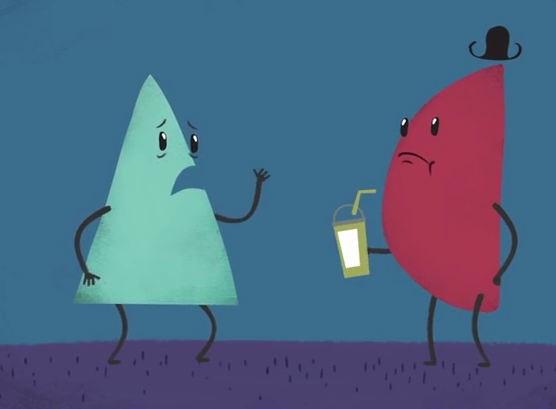Have you ever talked with a friend about a problem only to realize that he just doesn't seem to grasp why the issue is so important to you?
你有沒(méi)有遇到過(guò)這樣的情況,當(dāng)你跟一個(gè)朋友聊起自己的困難,你發(fā)現(xiàn)他好像無(wú)法明白這事為什么對(duì)你這么重要?
Have you ever presented an idea to a group and it's met with utter confusion?
你表達(dá)自己的想法給一群人,結(jié)果卻發(fā)現(xiàn)沒(méi)人能明白?
Or maybe you've been in an argument when the other person suddenly accuses you of not listening to what they're saying at all?
或者跟別人辯論時(shí),對(duì)方突然指責(zé)起你來(lái),說(shuō)你根本沒(méi)有在聽他們說(shuō)什么?
What's going on here?
這是怎么回事呢?
The answer is miscommunication, and in some form or another, we've all experienced it.
答案是交流不暢,而且不管是哪種形式(的交流不暢),我們都遇到過(guò)。

It can lead to confusion, animosity, misunderstanding, or even crashing a multimillion dollar probe into the surface of Mars.
它會(huì)讓人糊涂,產(chǎn)生仇恨,引起誤會(huì),甚至使一個(gè)價(jià)值數(shù)百萬(wàn)的探測(cè)器在火星墜毀。
The fact is even when face-to-face with another person, in the very same room, and speaking the same language,
其實(shí),即便人們當(dāng)面聊天,在同一個(gè)房間,說(shuō)同一種語(yǔ)言,
human communication is incredibly complex.
人類的交流依然是極為復(fù)雜的。
But the good news is that a basic understanding of what happens when we communicate can help us prevent miscommunication.
好在,當(dāng)我們交流時(shí),對(duì)當(dāng)下情況的基本理解可以幫我們避免交流不暢。
For decades, researchers have asked, "What happens when we communicate?"
數(shù)十年來(lái),科學(xué)家們不斷探索“當(dāng)我們交流時(shí),到底發(fā)生了什么?”
One interpretation, called the transmission model, views communication as a message that moves directly from one person to another,
有一種解釋是“傳遞模式”出問(wèn)題,它視這種交流模式是一種訊息只做單向的傳遞而已。
similar to someone tossing a ball and walking away.
這就好比,A 向 B 扔了一個(gè)球,然后走掉了。
But in reality, this simplistic model doesn't account for communication's complexity.
但是,這個(gè)簡(jiǎn)易的模式并不能用來(lái)解釋復(fù)雜的交流。
Enter the transactional model, which acknowledges the many added challenges of communicating.
另一種解釋是“交換模式”,它承認(rèn)交流中的附加障礙。
With this model, it's more accurate to think of communication between people as a game of catch.
這個(gè)模式形容地更準(zhǔn)確,就好比把人與人的交流比喻成一場(chǎng)接球游戲。
As we communicate our message, we receive feedback from the other party.
當(dāng)我們?cè)诮涣餍畔r(shí),我們會(huì)收到對(duì)方的反饋。
Through the transaction, we create meaning together.
通過(guò)這樣的信息交換,雙方共同建立語(yǔ)義。
But from this exchange, further complications arise.
但是這樣的交換也會(huì)有復(fù)雜性產(chǎn)生。
It's not like the Star Trek universe, where some characters can Vulcan mind meld, fully sharing thoughts and feelings.
它不像星際迷航里面的演員可以心靈感應(yīng),可以完全準(zhǔn)確地傳遞想法感受。
As humans, we can't help but send and receive messages through our own subjective lenses.
相反,人類只能通過(guò)主觀視角來(lái)發(fā)送和接收信息。
When communicating, one person expresses her interpretation of a message, and the person she's communicating with hears his own interpretation of that message.
在交流中,一個(gè)人按照她自己的理解去表達(dá)信息,而另一個(gè)人則會(huì)用自己的方式去理解該信息。
Our perceptual filters continually shift meanings and interpretations.
所以,我們的“感知過(guò)濾器”一直在改變語(yǔ)言的含義。



